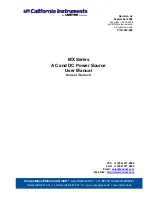
GE Power Management
ALPS Advanced Line Protection System
1-7
1 PRODUCT DESCRIPTION
1.2 INTRODUCTION
1
All zones of ground reactance characteristics will have a characteristic timer with a pickup range of 90 to 155° in steps of 1.
The characteristic timer setting will be used to “tilt” the reactance characteristic (Tent) to prevent over-reach on non-homo-
geneous systems, as shown below. Note that the “tent” is not the same as tilting the reactance because it also tilts down to
the left of the maximum reach balance point. By adjusting the angle of the phase angle comparator rather than the angle of
“maximum torque”, the transient over reach is not increased.
Figure 1–2: TENT CHARACTERISTIC
For the Zone 1 ground function, the signals are:
Phase A:
(
I
A
-
I
0
)·
Z1
1
+
K
0
1·
I
0
·
Z1
0
–
V
A
I
A
2
·
Z1
1
I
0
·
Z1
1
I
A
1
F
·
Z1
1
Phase B:
(
I
B
-
I
0
)·
Z1
1
+
K
0
1·
I
0
·
Z1
0
–
V
B
I
B
2
·
Z1
1
I
0
·
Z1
1
I
B
1
F
·
Z1
1
Phase C:
(
I
C
-
I
0
)·
Z1
1
+
K
0
1·
I
0
·
Z1
0
–
V
C
I
C
2
·
Z1
1
I
0
·
Z1
1
I
C
1
F
·
Z1
1
b) RESTRICTED DIRECTIONAL CHARACTERISTIC
The restricted directional characteristic for the ground quadrilateral requires a separate directional unit for each phase. No
settings are required for this characteristic. The input signals to the comparator are:
Phase A:
I
A
·
ZD
V
A
Phase B:
I
B
·
ZD
V
B
Phase C:
I
C
·
ZD
V
C
where
ZD is the angle of “maximum torque” and is equal to 65°.
The characteristic timer angle will be fixed at 115°. That is, the function will operate when the input signals are within ±65°
of each other.
If the faulted phase voltage magnitude is too low (as for a close-in Zone 1 fault), the phase directional function will not oper-
ate. This might also occur for a remote fault when the relay is located near a strong source. Therefore, if the phase voltage
is less than the minimum threshold voltage, the positive-sequence memory voltage from the ground Mho functions is used
in place of the phase voltage to polarize the directional function.
R
X
1
3
2
4
“TENT” CHARACTERISTIC
TENTCHAR.CDR
















































